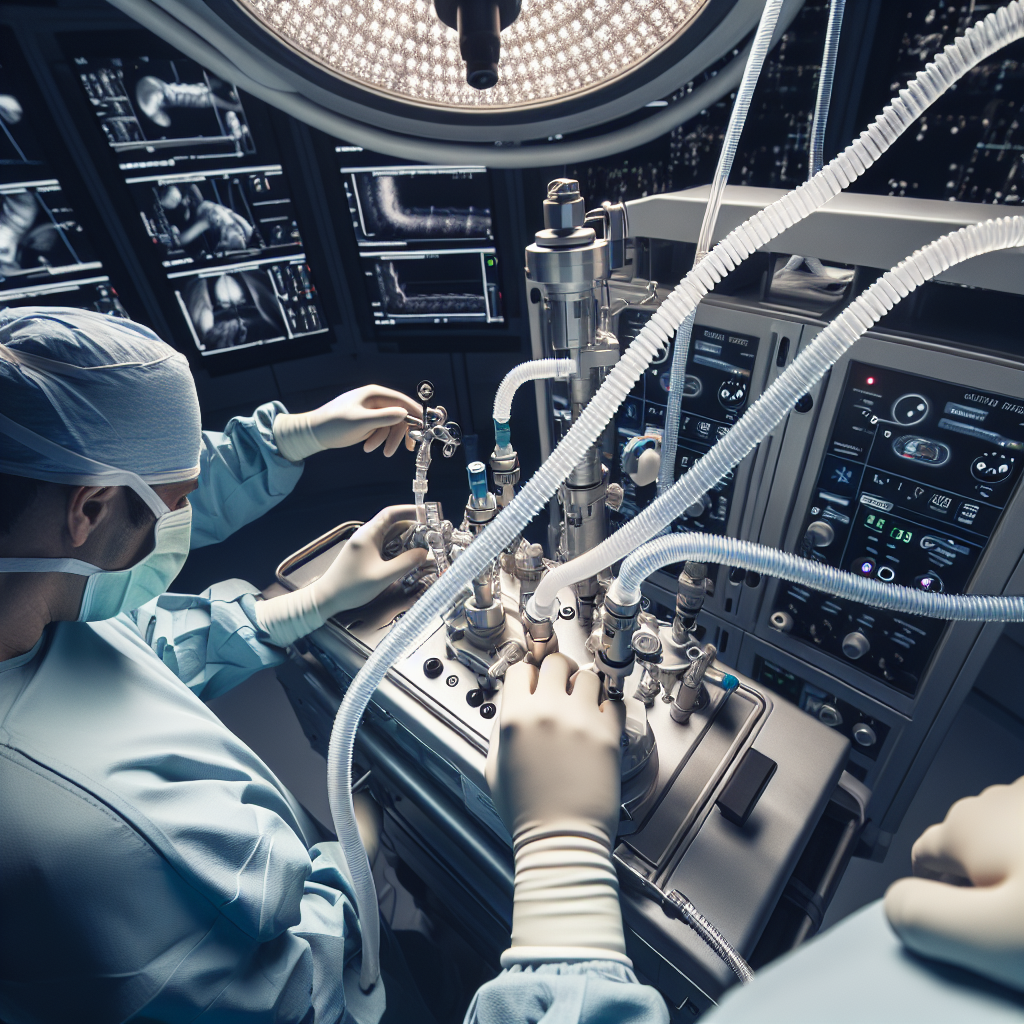The Ultimate Technical Guide to Anesthesia Gas Modules5 min read

Are you looking for a comprehensive resource on anesthesia gas modules? Understanding the technical specifications and operation of these critical components is essential for safe and effective anesthesia delivery. In this ultimate technical guide, we’ll cover everything you need to know about anesthesia gas modules, including key components, maintenance procedures, and troubleshooting tips.
Key Components of Anesthesia Gas Modules
An anesthesia gas module is a complex system made up of several key components that work together to deliver anesthetic gases to patients. Let’s take a closer look at each of these essential elements:
Vaporizers
Vaporizers are responsible for converting liquid anesthetic agents into a gaseous form that can be delivered to the patient. There are several types of vaporizers, including:
- Variable bypass vaporizers
- Measured flow vaporizers
- Heated vaporizers
Each type has its own unique features and benefits. For example, variable bypass vaporizers allow for precise control over anesthetic concentration, while heated vaporizers help maintain consistent output at low flow rates.
Flowmeters
Flowmeters are used to measure and control the flow of gases within the anesthesia machine. They typically consist of a series of tubes with floating indicators that show the flow rate of each gas (oxygen, nitrous oxide, air).
Accurate flow measurement is critical for maintaining the proper ratio of gases and ensuring safe anesthetic delivery. Flowmeters should be calibrated regularly to ensure accuracy.
Pressure Regulators
Pressure regulators reduce the high pressure of gases from central supply or cylinders to a safe, usable level for the anesthesia machine. They also help maintain consistent gas flow by compensating for changes in supply pressure.
Regulators should be inspected regularly for leaks, damage, or malfunction. Faulty regulators can lead to inadequate or excessive gas flow, compromising patient safety.
Monitoring and Safety Features
Modern anesthesia gas modules include a variety of monitoring and safety features to ensure optimal performance and patient well-being. Here are some key features to be aware of:
Oxygen Analyzers
Oxygen analyzers continuously measure the concentration of oxygen in the inspired gas mixture. They provide an early warning if oxygen levels fall below safe thresholds, allowing clinicians to take corrective action.
Oxygen analyzers should be calibrated before each use and replaced according to manufacturer recommendations to ensure accurate readings.
Pressure Alarms
Pressure alarms alert clinicians to abnormal pressure conditions within the anesthesia machine, such as high or low pipeline pressure, low oxygen supply pressure, or high airway pressure.
These alarms help prevent patient injury from excessive or insufficient gas delivery. Regular testing and maintenance of alarm systems is essential for proper function.
Scavenging Systems
Scavenging systems remove waste anesthetic gases from the operating room, protecting healthcare workers from exposure to potentially harmful agents. These systems typically consist of a gas collecting assembly, transfer tubing, and an interface with the hospital’s central vacuum system.
Proper maintenance of scavenging systems, including regular inspection for leaks or obstructions, is critical for effective waste gas removal and staff safety.
Maintenance and Troubleshooting
To ensure the safe and reliable operation of anesthesia gas modules, regular maintenance and troubleshooting procedures must be followed. Here are some key considerations:
Preventive Maintenance
Preventive maintenance involves routine inspections, testing, and servicing of anesthesia equipment to identify and correct potential issues before they lead to malfunctions or patient harm. Key tasks include:
- Leak testing of all gas connections and seals
- Calibration of vaporizers, flowmeters, and analyzers
- Replacement of filters, absorbents, and other consumables
- Functional testing of alarms, monitors, and safety features
Preventive maintenance should be performed according to manufacturer recommendations and documented in equipment logs for compliance and quality assurance purposes.
Troubleshooting Common Issues
Despite regular maintenance, issues may still arise with anesthesia gas modules. Some common problems and troubleshooting steps include:
- Inaccurate gas flow: Check for leaks, obstructions, or misaligned floats in flowmeters. Verify proper function of check valves and regulators.
- Vaporizer output inconsistent: Ensure adequate filling and proper seating of vaporizer. Check for leaks or obstructions in vaporizer and gas lines. Verify temperature and pressure compensation functions.
- Alarms not functioning: Test alarm systems regularly. Check sensor connections and batteries. Verify proper alarm limits and settings.
- Scavenging system malfunction: Inspect for leaks, kinks, or disconnections in transfer tubing. Verify proper interface with vacuum system. Check for obstructions in gas collecting assembly.
When troubleshooting, always refer to manufacturer manuals and follow proper safety protocols. Complex issues should be addressed by qualified biomedical technicians.
Frequently Asked Questions
What is the difference between a vaporizer and a flowmeter?
A vaporizer converts liquid anesthetic agents into a gaseous form for delivery to the patient. A flowmeter measures and controls the flow rate of gases (oxygen, nitrous oxide, air) within the anesthesia machine. While both are critical components, they serve distinct functions in the anesthetic gas delivery process.
How often should oxygen analyzers be calibrated?
Oxygen analyzers should be calibrated before each use to ensure accurate readings. This typically involves exposing the sensor to room air (21% oxygen) and adjusting the calibration as needed. Some analyzers may require more frequent calibration based on manufacturer recommendations or institutional protocols.
What should I do if I suspect a leak in the anesthesia gas module?
If you suspect a leak, immediately perform a thorough leak test of all gas connections and seals. This can be done using a soap solution or commercially available leak test kit. Pay particular attention to hose connections, O-rings, and gaskets. If a leak is detected, replace the faulty component or contact biomedical support for repair. Do not use the machine until the leak is resolved.
Conclusion
Anesthesia gas modules are complex systems that require a thorough understanding of technical specifications, operating principles, and maintenance procedures to ensure safe and effective use. By familiarizing yourself with the key components, monitoring features, and troubleshooting techniques covered in this guide, you’ll be well-equipped to optimize anesthetic gas delivery and protect patient well-being. Remember, regular preventive maintenance and attention to detail are essential for the reliable performance of these critical devices.
